
With erudition and wit, Jean Delumeau explores the medieval conviction that paradise existed in a precise although unreachable earthly location. Delving into the writings of dozens of medieval and Renaissance thinkers, from Augustine to Dante, Delumeau presents a luminous study of the meaning of Original Sin and the human yearning for paradise.
The finest minds of the Middle Ages wrote about where paradise was to be found, what it was like, and who dwelt in it. Explorers sailed into the unknown in search of paradisal gardens of wealth and delight that were thought to be near the original Garden. Cartographers drew Eden into their maps, often indicating the wilderness into which Adam and Eve were cast, along with the magical kingdom of Prester John, Jerusalem, Babel, the Happy Isles, Ophir, and other places described in biblical narrative or borrowed from other cultures. Later, Renaissance thinkers and writers meticulously reconstructed the details of the original Eden, even providing schedules of the Creation and physical descriptions of Adam and Eve.
Even when the Enlightenment, with its discovery of fossils and pre-Darwinian theories of evolution, gradually banished the dream of paradise on earth, a nostalgia for Eden shaped elements of culture from literature to gardening. In our own time, Eden's hold on the Western imagination continues to fuel questions such as whether land should be conserved or exploited and whether a return to innocence is possible.

Focusing primarily on the fifteenth through eighteenth centuries, Fontaine traces the origins and development of peddling and the establishment of trading networks. She analyzes the changing social construction of the practice and the effect of encounters between traders of different regions. Following the pedlars’ trade routes across Europe from Spain to Sweden and Scotland to the upper Rhine, she examines their importance as channels of communication as well as of goods and raises such issues as the impact of pedlars on the values and cultural practices of the communities they visited and the ways in which being merchants changed the lives of these migrants.
History of Pedlars in Europe separates the mythology that surrounds peddling from the historically reliable and integrates existing studies with new archival research to illuminate one of the most remote areas of the social and economic history of early modern Europe. A means of trade based on mobility, uncertainty, and interdependence, peddling is rediscovered as a dynamic force involved in nothing less than the creation of a modern consumer society.

Now Available from Duke University Press
Originally published in German in 1948, Noth’s application of a traditio-historical approach has made this book required reading for students and scholars
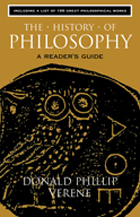
With the aim of guiding readers along, in Hegel’s words, “the long process of education towards genuine philosophy,” this introduction emphasizes the importance of striking up a conversation with the past. Only by looking to past masters and their works, it holds, can old memories and prior thought be brought fully to bear on the present. This living past invigorates contemporary practice, enriching today’s study and discoveries.
In this book, groundbreaking philosopher and author Donald Verene addresses two themes: why should one study the historically “great” texts and, if such a study is necessary, how can one undertake it? Acting out against the rejection of the idea that there is a philosophical canon, he centers his argument on the “tetralogy” of Plato, Aristotle, Kant, and Hegel. From his opening look at the rhetorical tradition, he brings those core ideals forward to classical Roman and medieval philosophers and then on into Renaissance and modern philosophy, including contemporary thinkers such as Derrida and Foucault. This vital chronological outline is supplemented by Verene’s contextualizing commentary. In ensuing sections, he offers guidance on reading philosophical works with “intellectual empathy,” suggests 100 essential works to establish a canon, illustrates the role of philosophers in history and society, and examines the nature of history itself. Ultimately, Verene concludes that history may be essential to philosophy, but philosophy is more than just its history.

Through brief, illustrated chapters on fifty landmark cameras and the photographers who used them, Michael Pritchard offers an entertaining look at photography as practiced by professionals, artists, and amateurs. A History of Photography in Fifty Cameras is organized chronologically, beginning with William Henry Fox Talbot’s wooden “Mousetrap” camera of 1835. Other entries include the Brownie (1900), the Coronet Midget (1935), the Kodak Instamatic 100 (1963), and, of course, the Polaroid SX-70 (1972). Photographs within each chapter show not only the cameras themselves but also samples of the images made with them. Pritchard uses each camera as a point of entry for talking about the people who used them and the kind of photos they produced, from Weegee and his Speed Graphic to Cartier-Bresson and the Leica’s role in the invention of photojournalism. In the hands of individual photographers, he reveals, cameras came to represent unique styles of depiction.
Together, the stories of the fifty cameras gathered here present an approachable and informative take on a medium that continues to fire the imagination, whether we’re perfecting the selfie or longing for the days of Fotomat.

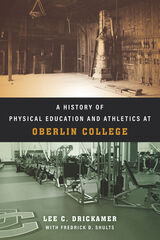
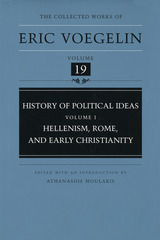
Reaching from the decline of the Greek Polis to Saint Augustine, this first volume of Eric Voegelin's eagerly anticipated History of Political Ideas fills the gap left between volumes 3 and 4 of Order and History. The heart of the book is the powerful account of Apostolic Christianity's political implications and the work of the early church fathers. Voegelin's consideration of the political philosophy of Rome and his unique analysis of Greek and early Roman law are of particular interest.
Although History of Political Ideas was begun as a textbook for Macmillan, Voegelin never intended it to be a conventional "synthesis." He sought instead an original comprehensive interpretation, founded on primary materials and taking into account the most advanced specialist scholarship—or science as he called it—available to him. Because of this, the book grew well beyond the confines of an easily marketable college survey and until now remained unpublished.
In the process of writing it, Voegelin himself outgrew the conceptual frame of a "History of Political Ideas," turning to compose Order and History and the other works of his maturity. History of Political Ideas became the ordered collection of materials from which much of Voegelin's later theoretical elaboration grew, structured in a manner that reveals the conceptual intimations of his later thought. As such, it provides an unparalleled opportunity to observe the working methods and the intellectual evolution of one of our century's leading political thinkers. In its embracing scope, History of Political Ideas contains both analyses of themes Voegelin developed in his later works and discussions of authors and ideas to which he did not return or which he later approached from a different angle and with a different emphasis.
In Hellenism, Rome, and Early Christianity, Voegelin demonstrates that the "spiritual disintegration" of the Hellenic world inaugurated a long process of transition in the self- understanding of Mediterranean and European man. The reflections that emerge remain universal concerns regarding the order of human existence in society and history. Although one may come to different conclusions, Voegelin's responses to the problems of the period suggest avenues of investigation that are still little traveled.

Voegelin's magisterial account of medieval political thought opens with a survey of the structure of the period and continues with an analysis of the Germanic invasions, the fall of Rome, and the rise of empire and monastic Christianity. The political implications of Christianity and philosophy in the period are elaborated in chapters devoted to John of Salisbury, Joachim of Flora (Fiore), Frederick II, Siger de Brabant, Francis of Assisi, Roman law, and climaxing in a remarkable study of Saint Thomas Aquinas's mighty thirteenth-century synthesis.
Although History of Political Ideas was begun as a textbook for Macmillan, Voegelin never intended it to be a conventional chronological account. He sought instead an original comprehensive interpretation, founded on primary materials and taking into account the most advanced specialist scholarship—or science as he called it—available to him. Because of this, the book grew well beyond the confines of an easily marketable college survey and until now remained unpublished.
In the process of writing it, Voegelin himself outgrew the conceptual frame of a "History of Political Ideas," turning to compose Order and History and the other works of his maturity. History of Political Ideas became the ordered collection of materials from which much of Voegelin's later theoretical elaboration grew, structured in a manner that reveals the conceptual intimations of his later thought. As such, it provides an unparalleled opportunity to observe the working methods and the intellectual evolution of one of our century's leading political thinkers. In its embracing scope, History of Political Ideas contains both analyses of themes Voegelin developed in his later works and discussions of authors and ideas to which he did not return or which he later approached from a different angle and with a different emphasis.
The Middle Ages to Aquinas has withstood the test of time. What makes it still highly valuable is its thoroughly revisionist approach, cutting through all the convenient clichés and generalizations and seeking to establish the experiential underpinnings that typified the medieval period.

In The Later Middle Ages, the third volume of his monumental History of Political Ideas, Eric Voegelin continues his exploration of one of the most crucial periods in the history of political thought. Illuminating the great figures of the high Middle Ages, Voegelin traces the historical momentum of our modern world in the core evocative symbols that constituted medieval civilization. These symbols revolved around the enduring aspiration for the sacrum imperium, the one order capable of embracing the transcendent and immanent, the ecclesiastical and political, the divine and human. The story of the later Middle Ages is that of the "civilizational schism"—the movement in which not only the reality but the aspiration for the sacrum imperium gradually disappeared and the unification of faith and reason dissolved.
His recognition of this civilizational schism provides Voegelin with a unique perspective on medieval society. William of Ockham, Dante, Giles of Rome, and Marsilius of Padua all emerge in Voegelin's study as predecessors to modern thought; each turns to personal authority and intellectual analysis in an attempt to comprehend the loss of the sacrum imperium as an authoritative ideal. Voegelin is further drawn into investigations that, despite insufficient attention by scholars, still bear relevance to the study of the later Middle Ages. The mysticism apparent in Piers Plowman and the apocalyptic revolt of Cola di Rienzo are merely two reactions to the disintegration of wholeness.
Yet the story of the later Middle Ages does not merely revolve around disintegration. Voegelin recognizes the emergence of the constitutional political tradition as the most positive development of this period. He is at his best when explaining the difference between the presence of a representative institution and the growth of communal consciousness. Voegelin's study of the English political pattern is matched only by his unique perspective on the German imperial zone, culminating in a fitting conclusion on Nicholas of Cusa—the one political thinker with the ability to evoke the unity of mankind beyond fragmentation.
The Later Middle Ages is at once a brilliant examination of the symbols that characterized medieval society and a remarkable predecessor to Voegelin's study of the modern world, beginning with the Renaissance and the Reformation.

By closely examining the sources, movements, and persons of the Renaissance and the Reformation, Voegelin reveals the roots of today's political ideologies in this fourth volume of his History of Political Ideas. This insightful study lays the groundwork for Voegelin's critique of the modern period and is essential to an understanding of his later analysis.
Voegelin identifies not one but two distinct beginnings of the movement toward modern political consciousness: the Renaissance and the Reformation. Historically, however, the powerful effects of the second have overshadowed the first. In this book, Voegelin carefully examines both periods and their presence in modern thought.
The Renaissance, represented by the works of Niccolò Machiavelli, Desiderius Erasmus, and Thomas More, is characterized by a struggle for balance. Machiavelli and Erasmus both looked to a virtuous prince to achieve order, one calling for brute force and the other for Christian spirituality to reach their goal. Also a participant in the first beginning of modernity, More was a complex thinker identified as a saint both of the church and of the communist movement. The issues he explored in Utopia, as Voegelin demonstrates, indirectly gave rise to concepts that have profoundly affected Western history: colonization, imperialism, national socialism, and communism.
Exploring the transition from the Renaissance to the Reformation is a brilliant chapter, "The People of God," which examines the sectarian movement. These pages contain the rich historical background that led to Voegelin's later conclusions about Gnosticism and its modern influences.
Voegelin offers a controversial view of the Reformation as well as the political and religious situation directly preceding it. Yet he sheds light on the strengths and inadequacies of its key figures, Martin Luther and John Calvin. The driving force behind the Reformation stemmed solely from the powerful personality of Luther. What began as an abstract, purely technical discussion developed into a full-blown revolt. Later in the period, Calvin confronted the problems left behind by Luther and endeavored to create his own universal church to supplant the Catholic Church. His theory of a new elite would have a distinct impact on history.
By examining the political ideas that first emerged during the Renaissance and Reformation, this fascinating volume provides a foundation for understanding the events of centuries to follow.
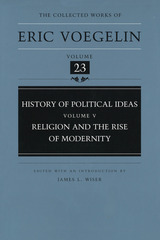
Examining the emergence of modernity within the philosophical and political debates of the sixteenth century, Religion and the Rise of Modernity resumes the analysis of the "great confusion" introduced in Volume IV of History of Political Ideas. Encompassing a vast range of events ignited by Luther's Ninety-Five Theses, this period is one of controversy, revolution, and partiality.
Despite the era's fragmentation and complexity, Voegelin's insightful analysis clarifies its significance and suggests the lines of change converging at a point in the future: the medieval Christian understanding of a divinely created closed cosmos was being replaced by a distinctly modern form of human consciousness that posits man as the proper origin of meaning in the universe.
Analyzing the most significant features of the great confusion, Voegelin examines a vast range of thought and issues of the age. From the more obvious thinkers to those less frequently studied, this volume features such figures as Calvin, Althusius, Hooker, Bracciolini, Savonarola, Copernicus, Tycho de Brahe, and Giordano Bruno. Devoting a considerable amount of attention to Jean Bodin, Voegelin presents him as a prophet of a new, true religion amid the civilizational disorder of the post-Christian era. Focusing on such traditional themes as monarchy, just war theory, and the philosophy of law, this volume also investigates issues within astrology, cosmology, and mathematics.
Religion and the Rise of Modernity is a valuable work of scholarship not only because of its treatment of individual thinkers and doctrines influential in the sixteenth century and beyond but also because of its close examination of those experiences that formed the modern outlook.

Volume VI of Voegelin's account of the history of Western political ideas continues from the point reached in the previous volume with the study of the mystic-philosopher Jean Bodin. Voegelin begins with a discussion of the conflict between Bishop Bossuet and Voltaire concerning the relationship between what is conventionally identified as sacred history and profane history. Bossuet maintained the traditional Christian position, the origin of which may be traced to Saint Augustine's City of God. Voegelin shows, however, that while Bossuet may have been heir to an adequate understanding of human existence, Voltaire drew attention to a series of historical facts, such as the comparative size of the Russian and Roman empires, the existence of Chinese civilization, and the discovery of the New World, that could be incorporated into Bossuet's account only with great difficulty or not at all.
For the first time, the theoretical problem of the historicity of evocative symbols of political order becomes the focus of Voegelin's analysis. This major problem, which found a provisional solution in the New Science of Vico, was intertwined with several additional ones that may be summarized in terms of an increasing closure toward what Voegelin calls the world- transcendent ground of reality. Voegelin traces the consequences of the new attitudes and sentiments in terms of an increasing disorientation in personal, social, and political life, a disorientation that was expressed in increasingly impoverished experiences and accounts of history and of nature.
Vico represents the great exception to this decline in the intellectual adequacy of modern political ideas and modern self- understanding. Readers familiar with Voegelin's New Science of Politics will find in the long, challenging, and brilliant chapter on Vico and his New Science one of the major textual analyses that sustained Voegelin's entire intellectual enterprise. Indeed, the chapter on Vico, along with similarly provocative and insightful chapters on Bodin and on Schelling in other volumes, may almost be read as an element of Voegelin's own spiritual autobiography.

In The New Order and Last Orientation, Eric Voegelin explores two distinctly different yet equally important aspects of modernity. He begins by offering a vivid account of the political situation in seventeenth-century Europe after the decline of the church and the passing of the empire. Voegelin shows how the intellectual and political disorder of the period was met by such seemingly disparate responses as Grotius's theory of natural right, Hobbes's Leviathan, the role of the Fronde in the formation of the French national state, Spinoza's Tractatus Theologico-Politicus, and Locke's Second Treatise, the blueprint of a modern middle-class society. By putting these responses and the thought of Montesquieu, Hume, and others in the context of the birth pains of the national state and the emergence of a new self-understanding of man, Voegelin achieves a brilliant mixture of political history and profound philosophical analysis.
Voegelin's verdict of modernity is pronounced most powerfully in the opening part of "Last Orientation," in the chapter entitled "Phenomenalism." His discussion of the intellectual confusion underlying the modern project of scientistic phenomenalism is the most original criticism leveled against modernity to date. It is at the same time the first step toward a recovery of reality through philosophy conceived as a science of substance in the spirit of Giordano Bruno. Voegelin's first example of such an effort at recovering reality is the chapter on Schelling, one of the spiritual realists who has not been affected by the prevailing rationalist or reductionist creeds that are part of the modern disorder. Schelling's indirect yet powerful influence on Schopenhauer, Nietzsche, and Freud more than justifies Voegelin's interest in his philosophy and character, even though Voegelin would later distance himself from some of Schelling's positions.
The volume's concluding chapter, "Nietzsche and Pascal," applies the understanding gained from the study of Schelling to the thought of the most powerful critic of the age, Nietzsche. Nietzsche's self-avowed affinity with Pascal provides the key to an analysis of the strengths and weaknesses of his thought and reaffirms the connection that links the beginning of modernity with its most recent crises and the efforts to overcome them.

Reaching into our own time, Crisis and the Apocalypse of Man confronts the disintegration of traditional sources of meaning and the correlative attempt to generate new sources of order from within the self. Voegelin allows us to contemplate the crisis in its starkest terms as the apocalypse of man that now seeks to replace the apocalypse of God. The totalitarian upheaval that convulsed Voegelin's world, and whose aftermath still defines ours, is only the external manifestation of an inner spiritual turmoil. Its roots have been probed throughout the eight volumes of History of Political Ideas, but its emergence is marked by the age of Enlightenment.
In our postmodern era, discussions of the collapse of the "enlightenment project" have become commonplace. Voegelin compels us to follow the great-souled individuals who sought to go from disintegration of the present toward evocations of order for the future. Such thinkers as Comte, Bakunin, and Marx suffered through the crisis and fully understood the need for a new outpouring of the spirit. They resolved to supply the deficiency themselves. As a consequence they launched us irrevocably on the path of the apocalypse of man.
One of the great merits of Voegelin's analysis is his exposition of the pervasive character of this crisis. It is not confined to the megalomaniacal dreamers of a revolutionary apocalypse; rather, echoes of it are found in the more moderate Enlightenment preoccupation with progress to be attained through application of the scientific method. Faith in the capacity of instrumental reason to answer the ultimate questions of human existence defined men such as Voltaire, Helvétius, Diderot, D'Alembert, and Condorcet. It remains the authoritative faith of our world today, Voegelin argues, demonstrated by our continuing inability to step outside the parameters of the Enlightenment. Are we condemned, then, to oscillate between the rational incoherence of a science that never delivers on its promises and a now discredited revolutionary idealism that wreaks havoc in practice? This is the question toward which Voegelin's final volume points. While not direct, his response is evident everywhere. Crisis and the Apocalypse of Man could have been written only by a man who had reached his own resolution of the crisis.
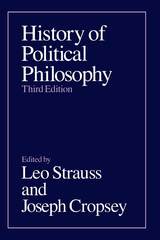

First of the widely celebrated and sumptuously illustrated series, this book reveals in intimate detail what life was really like in the ancient world. Behind the vast panorama of the pagan Roman empire, the reader discovers the intimate daily lives of citizens and slaves—from concepts of manhood and sexuality to marriage and the family, the roles of women, chastity and contraception, techniques of childbirth, homosexuality, religion, the meaning of virtue, and the separation of private and public spaces.
The emergence of Christianity in the West and the triumph of Christian morality with its emphasis on abstinence, celibacy, and austerity is startlingly contrasted with the profane and undisciplined private life of the Byzantine Empire. Using illuminating motifs, the authors weave a rich, colorful fabric ornamented with the results of new research and the broad interpretations that only masters of the subject can provide.

This fifth and final volume in an award-winning series charts the remarkable inner history of our times from the tumult of World War I to the present day, when personal identity was released from its moorings in gender, family, social class, religion, politics, and nationality. Nine brilliant and bold historians present a dynamic picture of cultures in transition and in the process scrutinize a myriad of subjects—the sacrament of confession, volunteer hotlines, Nazi policies toward the family, the baby boom, evolving sexuality, the history of contraception, and ever-changing dress codes. They draw upon many unexpected sources, including divorce hearing transcripts, personal ads, and little-known demographic and consumer data.
Perhaps the most notable pattern to emerge is a polarizing of public and private realms. Productive labor shifts from the home to an impersonal public setting. Salaried or corporate employment replaces many independent, entrepreneurial jobs, and workers of all kinds aggressively pursue their leisure time—coffee and lunch breaks, weekends, vacations. Zoning laws segregate industrial and commercial areas from residential neighborhoods, which are no longer a supportive “theater” of benign surveillance, gossip, and mutual concern, but an assemblage of aloof and anonymous individuals or families. Scattered with personal possessions and appliances, homes grow large by yesterday's standards and are marked by elaborate spatial subdivisions; privacy is now possible even among one's own family. Men and women are obsessed with health, fitness, diet, and appearance as the body becomes the focal point of personal identity. Mirrors, once a rarity, are ubiquitous. In the search for sexual and individualistic fulfillment, romantic love becomes the foundation of marriage. Couples marry at an older age; families are smaller. The divorce rate rises, and with it the number of single-parent households. Women, entering the workforce in unprecedented numbers, frequently function as both breadwinner and homemaker. The authors interrelate these dramatic patterns with the changing roles of state and religion in family matters, the socialization of education and elder care, the growth of feminism, the impact of media on private life, and the nature of secrecy.
Comprehensive and astute, Riddles of Identity in Modern Times chronicles a period when the differentiation of life into public and private realms, once a luxury of the wealthy, gradually spread throughout the population. For better or worse, people can now be alone. This fifth volume, differing significantly from the French edition, portrays Italian, German, and American family life in the twentieth century. The authors of these additional chapters—Chiara Saraceno, Ingeborg Weber-Kellermann, and Elaine Tyler May—enlarge and enhance the already broad European and Atlantic canvas that depicts the modern identity.

The nineteenth century was the golden age of private life, a time when the tentative self-consciousness of the Renaissance and earlier eras took recognizable form, and the supreme individual, with a political, scientific, and above all existential value, emerged. The present book, fourth in the popular series, chronicles this development from the tumult of the French Revolution to the outbreak of World War I—a century and a quarter of rapid, ungovernable change culminating in a conflict that, at a stroke, altered life in the Western world.
Guided by six eminent historians, we move from the Enlightenment of the eighteenth century, which conceived of man as a noble creature of reason, into nineteenth-century Romanticism with its affirmation of distinctively individual creatures in all their mystery and impulsiveness, exalting intuition as a mode of knowledge. More and more, men and women wanted to sleep alone, to be left alone to read and write, to dress as they pleased, to eat or drink anything they liked, to consort with and love whomever they fancied. Growing democracies advanced those wishes to the status of rights, expanding markets stimulated them, and migration encouraged them. That new frontier, the city, simultaneously weakened family and community constraints, spurred personal ambitions, and attenuated traditional beliefs.
The authors dramatize the nineteenth century’s organized effort to stabilize the boundary between public and private by mooring it to the family, with the father as sovereign. Such chapters as “The Sweet Delights of Home,” “The Family Triumphant,” and “Private Spaces” describe the new domestic ideal of the private dwelling as a refuge from perils and temptations in the public arena, the father as benevolent despot, the wife as contented practitioner of domestic arts, the children as small versions of adults, equipping themselves to follow in their parents’ righteous footsteps. Particularly in England, the middle class was central to the formation of this homely standard, which spread to the working classes through evangelical preaching, utilitarian writings, and economic changes and improvements that resulted in a separation of home and workplace. At the same time, the gentry was transforming castles into country houses, knights into foxhunters, and landowners into gentleman farmers. The domesticating process also expressed itself in hygienic practices (soap, waterclosets, bathtubs), fashions in clothing, and vogues in sports, courtship, and lovemaking.
From the time of the French Revolution, when private or special interests were looked upon as shadowy influences likely to foster conspiracy and treason, through the rapid transformations of the nineteenth century, the authors reveal the more radical forms of modernity that arrived with the twentieth century, with its explosions of trade and technology. Besides the external development of goods and conveniences, the expanses of the psyche were also being reorganized, bringing a new openness about sexuality liberated from procreation and marriage. Feminism, a relatively sporadic movement in the nineteenth century, became a more persistent force, while young people and the avant-garde continued to break the rules and push for change as an end in itself. As always, law lagged behind reality: in practice, more and more people rebelled against communal and family discipline. The declaration of war in 1917 put a hold on some of the flowering of individuality, but the unstoppable trend toward personality nurtured by private life was only temporarily curbed.


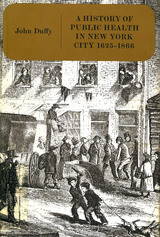

With the Middle Ages in Europe and the Middle East, innovative re-inventions of reading emerged – silent and liturgical reading; the custom of lectors; reading’s focus in general education – whereupon printing transformed society’s entire attitude to reading. Fischer charts the explosion of the book trade in this era, its increased audience and radically changed subject-matter; describes the emergence of broadsheets, newspapers and public readings; and traces the effect of new font designs on general legibility.
Fischer discusses society’s dedication to public literacy in the sweeping educational reforms of the eighteenth and nineteenth centuries, and notes the appearance of free libraries, gender differences in reading matter, public advertising and the "forbidden" lists of Church, State and the unemancipated. Finally, he assesses the future, in which it is likely that read communication will soon exceed oral communication through the use of the personal computer and the internet, and looks at "visual language" and modern theories of how reading is processed in the human brain. Asking how the New Reader can reshape reading’s future, he suggests a radical new definition of what reading could be.
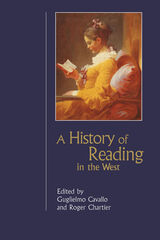
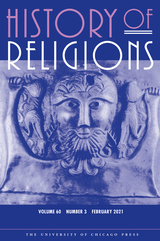
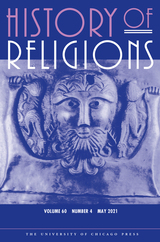
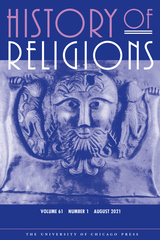
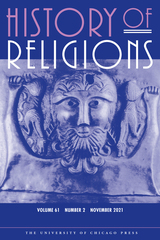
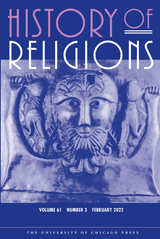
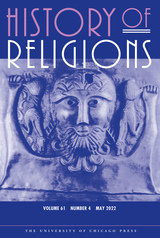
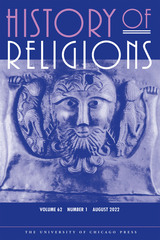
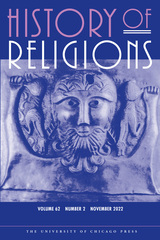
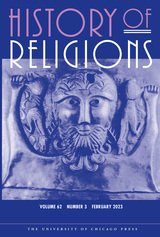
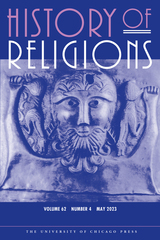
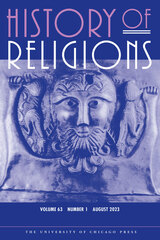
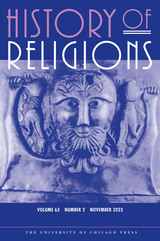
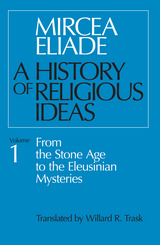
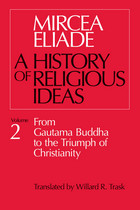
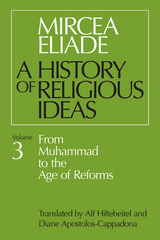
As in his previous work, Eliade pays particular attention to heresies, folk beliefs, and cults of secret wisdom, such as alchemy and sorcery, and continues the discussion, begun in earlier volumes, of pre-Christian shamanistic practices in northern Europe and the syncretistic tradition of Tibetan Buddhism. These subcultures, he maintains, are as important as the better-known orthodoxies to a full understanding of Judaism, Christianity, and Islam.

Rome, from the beginning.
Livy (Titus Livius), the great Roman historian, was born at or near Patavium (Padua) in 64 or 59 BC; he may have lived mostly in Rome but died at Patavium, in AD 12 or 17.
Livy’s only extant work is part of his history of Rome from the foundation of the city to 9 BC. Of its 142 books, we have just thirty-five, and short summaries of all the rest except two. The whole work was, long after his death, divided into Decades or series of ten. Books 1–10 we have entire; books 11–20 are lost; books 21–45 are entire, except parts of 41 and 43–45. Of the rest only fragments and the summaries remain. In splendid style Livy, a man of wide sympathies and proud of Rome’s past, presented an uncritical but clear and living narrative of Rome’s rise to greatness.
The Loeb Classical Library edition of Livy is in fourteen volumes. The last volume includes a comprehensive index.

Rome, from the beginning.
Livy (Titus Livius), the great Roman historian, was born at or near Patavium (Padua) in 64 or 59 BC; he may have lived mostly in Rome but died at Patavium, in AD 12 or 17.
Livy’s only extant work is part of his history of Rome from the foundation of the city to 9 BC. Of its 142 books, we have just thirty-five, and short summaries of all the rest except two. The whole work was, long after his death, divided into Decades or series of ten. Books 1–10 we have entire; books 11–20 are lost; books 21–45 are entire, except parts of 41 and 43–45. Of the rest only fragments and the summaries remain. In splendid style Livy, a man of wide sympathies and proud of Rome’s past, presented an uncritical but clear and living narrative of Rome’s rise to greatness.
The Loeb Classical Library edition of Livy is in fourteen volumes. The last volume includes a comprehensive index.

Rome, from the beginning.
Livy (Titus Livius), the great Roman historian, was born at or near Patavium (Padua) in 64 or 59 BC; he may have lived mostly in Rome but died at Patavium, in AD 12 or 17.
Livy’s only extant work is part of his history of Rome from the foundation of the city to 9 BC. Of its 142 books, we have just thirty-five, and short summaries of all the rest except two. The whole work was, long after his death, divided into Decades or series of ten. Books 1–10 we have entire; books 11–20 are lost; books 21–45 are entire, except parts of 41 and 43–45. Of the rest only fragments and the summaries remain. In splendid style Livy, a man of wide sympathies and proud of Rome’s past, presented an uncritical but clear and living narrative of Rome’s rise to greatness.
The Loeb Classical Library edition of Livy is in fourteen volumes. The last volume includes a comprehensive index.

Rome, from the beginning.
Livy (Titus Livius), the great Roman historian, was born at or near Patavium (Padua) in 64 or 59 BC; he may have lived mostly in Rome but died at Patavium, in AD 12 or 17.
Livy’s only extant work is part of his history of Rome from the foundation of the city to 9 BC. Of its 142 books, we have just thirty-five, and short summaries of all the rest except two. The whole work was, long after his death, divided into Decades or series of ten. Books 1–10 we have entire; books 11–20 are lost; books 21–45 are entire, except parts of 41 and 43–45. Of the rest only fragments and the summaries remain. In splendid style Livy, a man of wide sympathies and proud of Rome’s past, presented an uncritical but clear and living narrative of Rome’s rise to greatness.
The Loeb Classical Library edition of Livy is in fourteen volumes. The last volume includes a comprehensive index.

Rome, from the beginning.
Livy (Titus Livius), the great Roman historian, was born at Patavium (Padua) in 64 or 59 BC, where after years in Rome he died in AD 12 or 17.
Livy’s history, composed as the imperial autocracy of Augustus was replacing the republican system that had stood for over five hundred years, presents in splendid style a vivid narrative of Rome’s rise from the traditional foundation of the city in 753 or 751 BC to 9 BC and illustrates the collective and individual virtues necessary to achieve and maintain such greatness.
Of its 142 books, conventionally divided into pentads and decades, we have 1–10 and 21–45 complete, and short summaries (periochae) of all the rest except 41 and 43–45; 11–20 are lost, and of the rest only fragments and the summaries remain.
The fourth decade comprises two recognizable pentads: Books 31–35 narrate the Second Macedonian War (200–196) and its aftermath (Rome’s growing hegemony over Greece and tension with Antiochus III, the Seleucid ruler of the Near East), then Books 36–40 the years from 191 to 180, when Rome crushed and shrank Antiochus’ empire to extend and consolidate her mastery over the Hellenistic states. Also included are detailed narratives of Rome’s domestic politics and society, and of her western wars.
This edition of the fourth decade, which replaces the original Loeb edition by Evan T. Sage, offers a text based on Briscoe’s edition, a fresh translation, and ample annotation fully current with modern scholarship.

Livy (Titus Livius), the great Roman historian, was born at or near Patavium (Padua) in 64 or 59 BCE; he may have lived mostly in Rome but died at Patavium, in 12 or 17 CE.
Livy's only extant work is part of his history of Rome from the foundation of the city to 9 BCE. Of its 142 books, we have just 35, and short summaries of all the rest except two. The whole work was, long after his death, divided into Decades or series of ten. Books 110 we have entire; books 1120 are lost; books 2145 are entire, except parts of 41 and 4345. Of the rest only fragments and the summaries remain. In splendid style Livy, a man of wide sympathies and proud of Rome's past, presented an uncritical but clear and living narrative of the rise of Rome to greatness.
The Loeb Classical Library edition of Livy is in fourteen volumes. The last volume includes a comprehensive index.

Rome, from the beginning.
Livy (Titus Livius), the great Roman historian, was born at Patavium (Padua) in 64 or 59 BC, where after years in Rome he died in AD 12 or 17. Livy’s history, composed as the imperial autocracy of Augustus was replacing the republican system that had stood for over five hundred years, presents in splendid style a vivid narrative of Rome’s rise from the traditional foundation of the city in 753 or 751 BC to 9 BC and illustrates the collective and individual virtues necessary to achieve and maintain such greatness.
Of its 142 books, conventionally divided into pentads and decades, we have 1–10 and 21–45 complete, and short summaries (periochae) of all the rest except 41 and 43–45; 11–20 are lost, and of the rest only fragments and the summaries remain.
The third decade constitutes our fullest surviving account of the momentous Second Punic (or Hannibalic) War, featuring a famous gallery of leaders Roman, Carthaginian, and Greek, all memorably drawn. It comprises two recognizable pentads: Books 21–25 narrate the run-up to conflict and Rome’s struggles in its first phase, with Hannibal dominant; Books 26–30 relate Rome’s revival and final victory, as the focus shifts to Scipio Africanus.
This edition of the third decade, which replaces the original Loeb editions by B. O. Foster (Books 21–22) and Frank Gardner Moore (Books 23–30), offers a text based on the critical editions by John Briscoe (Books 21–25) and P. G. Walsh (Books 26–30), a fresh translation, and ample annotation fully current with modern scholarship.

Livy (Titus Livius), the great Roman historian, was born at or near Patavium (Padua) in 64 or 59 BCE; he may have lived mostly in Rome but died at Patavium, in 12 or 17 CE.
Livy's only extant work is part of his history of Rome from the foundation of the city to 9 BCE. Of its 142 books, we have just 35, and short summaries of all the rest except two. The whole work was, long after his death, divided into Decades or series of ten. Books 110 we have entire; books 1120 are lost; books 2145 are entire, except parts of 41 and 4345. Of the rest only fragments and the summaries remain. In splendid style Livy, a man of wide sympathies and proud of Rome's past, presented an uncritical but clear and living narrative of the rise of Rome to greatness.
The Loeb Classical Library edition of Livy is in fourteen volumes. The last volume includes a comprehensive index.

Rome, from the beginning.
Livy (Titus Livius), the great Roman historian, was born at Patavium (Padua) in 64 or 59 BC, where after years in Rome he died in AD 12 or 17. Livy’s history, composed as the imperial autocracy of Augustus was replacing the republican system that had stood for over five hundred years, presents in splendid style a vivid narrative of Rome’s rise from the traditional foundation of the city in 753 or 751 BC to 9 BC and illustrates the collective and individual virtues necessary to achieve and maintain such greatness.
Of its 142 books, conventionally divided into pentads and decades, we have 1–10 and 21–45 complete, and short summaries (periochae) of all the rest except 41 and 43–45; 11–20 are lost, and of the rest only fragments and the summaries remain.
The third decade constitutes our fullest surviving account of the momentous Second Punic (or Hannibalic) War, featuring a famous gallery of leaders Roman, Carthaginian, and Greek, all memorably drawn. It comprises two recognizable pentads: Books 21–25 narrate the run-up to conflict and Rome’s struggles in its first phase, with Hannibal dominant; Books 26–30 relate Rome’s revival and final victory, as the focus shifts to Scipio Africanus.
This edition of the third decade, which replaces the original Loeb editions by B. O. Foster (Books 21–22) and Frank Gardner Moore (Books 23–30), offers a text based on the critical editions by John Briscoe (Books 21–25) and P. G. Walsh (Books 26–30), a fresh translation, and ample annotation fully current with modern scholarship.

Livy (Titus Livius), the great Roman historian, was born at or near Patavium (Padua) in 64 or 59 BCE; he may have lived mostly in Rome but died at Patavium, in 12 or 17 CE.
Livy's only extant work is part of his history of Rome from the foundation of the city to 9 BCE. Of its 142 books, we have just 35, and short summaries of all the rest except two. The whole work was, long after his death, divided into Decades or series of ten. Books 110 we have entire; books 1120 are lost; books 2145 are entire, except parts of 41 and 4345. Of the rest only fragments and the summaries remain. In splendid style Livy, a man of wide sympathies and proud of Rome's past, presented an uncritical but clear and living narrative of the rise of Rome to greatness.
The Loeb Classical Library edition of Livy is in fourteen volumes. The last volume includes a comprehensive index.

Rome, from the beginning.
Livy (Titus Livius), the great Roman historian, was born at Patavium (Padua) in 64 or 59 BC, where after years in Rome he died in AD 12 or 17. Livy’s history, composed as the imperial autocracy of Augustus was replacing the republican system that had stood for over five hundred years, presents in splendid style a vivid narrative of Rome’s rise from the traditional foundation of the city in 753 or 751 BC to 9 BC and illustrates the collective and individual virtues necessary to achieve and maintain such greatness.
Of its 142 books, conventionally divided into pentads and decades, we have 1–10 and 21–45 complete, and short summaries (periochae) of all the rest except 41 and 43–45; 11–20 are lost, and of the rest only fragments and the summaries remain.
The third decade constitutes our fullest surviving account of the momentous Second Punic (or Hannibalic) War, featuring a famous gallery of leaders Roman, Carthaginian, and Greek, all memorably drawn. It comprises two recognizable pentads: Books 21–25 narrate the run-up to conflict and Rome’s struggles in its first phase, with Hannibal dominant; Books 26–30 relate Rome’s revival and final victory, as the focus shifts to Scipio Africanus.
This edition of the third decade, which replaces the original Loeb editions by B. O. Foster (Books 21–22) and Frank Gardner Moore (Books 23–30), offers a text based on the critical editions by John Briscoe (Books 21–25) and P. G. Walsh (Books 26–30), a fresh translation, and ample annotation fully current with modern scholarship.
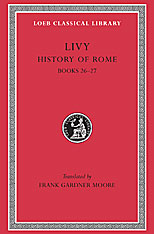
Livy (Titus Livius), the great Roman historian, was born at or near Patavium (Padua) in 64 or 59 BCE; he may have lived mostly in Rome but died at Patavium, in 12 or 17 CE.
Livy's only extant work is part of his history of Rome from the foundation of the city to 9 BCE. Of its 142 books, we have just 35, and short summaries of all the rest except two. The whole work was, long after his death, divided into Decades or series of ten. Books 110 we have entire; books 1120 are lost; books 2145 are entire, except parts of 41 and 4345. Of the rest only fragments and the summaries remain. In splendid style Livy, a man of wide sympathies and proud of Rome's past, presented an uncritical but clear and living narrative of the rise of Rome to greatness.
The Loeb Classical Library edition of Livy is in fourteen volumes. The last volume includes a comprehensive index.

Rome, from the beginning.
Livy (Titus Livius), the great Roman historian, was born at Patavium (Padua) in 64 or 59 BC, where after years in Rome he died in AD 12 or 17. Livy’s history, composed as the imperial autocracy of Augustus was replacing the republican system that had stood for over five hundred years, presents in splendid style a vivid narrative of Rome’s rise from the traditional foundation of the city in 753 or 751 BC to 9 BC and illustrates the collective and individual virtues necessary to achieve and maintain such greatness.
Of its 142 books, conventionally divided into pentads and decades, we have 1–10 and 21–45 complete, and short summaries (periochae) of all the rest except 41 and 43–45; 11–20 are lost, and of the rest only fragments and the summaries remain.
The third decade constitutes our fullest surviving account of the momentous Second Punic (or Hannibalic) War, featuring a famous gallery of leaders Roman, Carthaginian, and Greek, all memorably drawn. It comprises two recognizable pentads: Books 21–25 narrate the run-up to conflict and Rome’s struggles in its first phase, with Hannibal dominant; Books 26–30 relate Rome’s revival and final victory, as the focus shifts to Scipio Africanus.
This edition of the third decade, which replaces the original Loeb editions by B. O. Foster (Books 21–22) and Frank Gardner Moore (Books 23–30), offers a text based on the critical editions by John Briscoe (Books 21–25) and P. G. Walsh (Books 26–30), a fresh translation, and ample annotation fully current with modern scholarship.

Livy (Titus Livius), the great Roman historian, was born at or near Patavium (Padua) in 64 or 59 BCE; he may have lived mostly in Rome but died at Patavium, in 12 or 17 CE.
Livy's only extant work is part of his history of Rome from the foundation of the city to 9 BCE. Of its 142 books, we have just 35, and short summaries of all the rest except two. The whole work was, long after his death, divided into Decades or series of ten. Books 110 we have entire; books 1120 are lost; books 2145 are entire, except parts of 41 and 4345. Of the rest only fragments and the summaries remain. In splendid style Livy, a man of wide sympathies and proud of Rome's past, presented an uncritical but clear and living narrative of the rise of Rome to greatness.
The Loeb Classical Library edition of Livy is in fourteen volumes. The last volume includes a comprehensive index.

Rome, from the beginning.
Livy (Titus Livius), the great Roman historian, was born at Patavium (Padua) in 64 or 59 BC, where after years in Rome he died in AD 12 or 17.
Livy’s history, composed as the imperial autocracy of Augustus was replacing the republican system that had stood for over five hundred years, presents in splendid style a vivid narrative of Rome’s rise from the traditional foundation of the city in 753 or 751 BC to 9 BC and illustrates the collective and individual virtues necessary to achieve and maintain such greatness.
Of its 142 books, conventionally divided into pentads and decades, we have 1–10 and 21–45 complete, and short summaries (periochae) of all the rest except 41 and 43–45; 11–20 are lost, and of the rest only fragments and the summaries remain.
The fourth decade comprises two recognizable pentads: Books 31–35 narrate the Second Macedonian War (200–196) and its aftermath (Rome’s growing hegemony over Greece and tension with Antiochus III, the Seleucid ruler of the Near East), then Books 36–40 the years from 191 to 180, when Rome crushed and shrank Antiochus’ empire to extend and consolidate her mastery over the Hellenistic states. Also included are detailed narratives of Rome’s domestic politics and society, and of her western wars.
This edition of the fourth decade, which replaces the original Loeb edition by Evan T. Sage, offers a text based on Briscoe’s edition, a fresh translation, and ample annotation fully current with modern scholarship.

Livy (Titus Livius), the great Roman historian, was born at or near Patavium (Padua) in 64 or 59 BCE; he may have lived mostly in Rome but died at Patavium, in 12 or 17 CE.
Livy's only extant work is part of his history of Rome from the foundation of the city to 9 BCE. Of its 142 books, we have just 35, and short summaries of all the rest except two. The whole work was, long after his death, divided into Decades or series of ten. Books 110 we have entire; books 1120 are lost; books 2145 are entire, except parts of 41 and 4345. Of the rest only fragments and the summaries remain. In splendid style Livy, a man of wide sympathies and proud of Rome's past, presented an uncritical but clear and living narrative of the rise of Rome to greatness.
The Loeb Classical Library edition of Livy is in fourteen volumes. The last volume includes a comprehensive index.

Livy (Titus Livius), the great Roman historian, was born at or near Patavium (Padua) in 64 or 59 BCE; he may have lived mostly in Rome but died at Patavium, in 12 or 17 CE.
Livy's only extant work is part of his history of Rome from the foundation of the city to 9 BCE. Of its 142 books, we have just 35, and short summaries of all the rest except two. The whole work was, long after his death, divided into Decades or series of ten. Books 110 we have entire; books 1120 are lost; books 2145 are entire, except parts of 41 and 4345. Of the rest only fragments and the summaries remain. In splendid style Livy, a man of wide sympathies and proud of Rome's past, presented an uncritical but clear and living narrative of the rise of Rome to greatness.
The Loeb Classical Library edition of Livy is in fourteen volumes. The last volume includes a comprehensive index.

Rome, from the beginning.
Livy (Titus Livius), the great Roman historian, was born at Patavium (Padua) in 64 or 59 BC, where after years in Rome he died in AD 12 or 17.
Livy’s history, composed as the imperial autocracy of Augustus was replacing the republican system that had stood for over five hundred years, presents in splendid style a vivid narrative of Rome’s rise from the traditional foundation of the city in 753 or 751 BC to 9 BC and illustrates the collective and individual virtues necessary to achieve and maintain such greatness.
Of its 142 books, conventionally divided into pentads and decades, we have 1–10 and 21–45 complete, and short summaries (periochae) of all the rest except 41 and 43–45; 11–20 are lost, and of the rest only fragments and the summaries remain.
The fourth decade comprises two recognizable pentads: Books 31–35 narrate the Second Macedonian War (200–196) and its aftermath (Rome’s growing hegemony over Greece and tension with Antiochus III, the Seleucid ruler of the Near East), then Books 36–40 the years from 191 to 180, when Rome crushed and shrank Antiochus’ empire to extend and consolidate her mastery over the Hellenistic states. Also included are detailed narratives of Rome’s domestic politics and society, and of her western wars.
This edition of the fourth decade, which replaces the original Loeb edition by Evan T. Sage, offers a text based on Briscoe’s edition, a fresh translation, and ample annotation fully current with modern scholarship.

Rome, from the beginning.
Livy (Titus Livius), the great Roman historian, was born at or near Patavium (Padua) in 64 or 59 BC; he may have lived mostly in Rome but died at Patavium, in AD 12 or 17.
Livy’s only extant work is part of his history of Rome from the foundation of the city to 9 BC. Of its 142 books, we have just thirty-five, and short summaries of all the rest except two. The whole work was, long after his death, divided into Decades or series of ten. Books 1–10 we have entire; books 11–20 are lost; books 21–45 are entire, except parts of 41 and 43–45. Of the rest only fragments and the summaries remain. In splendid style Livy, a man of wide sympathies and proud of Rome’s past, presented an uncritical but clear and living narrative of Rome’s rise to greatness.
The Loeb Classical Library edition of Livy is in fourteen volumes. The last volume includes a comprehensive index.

Rome, from the beginning.
Livy (Titus Livius), the great Roman historian, was born at or near Patavium (Padua) in 64 or 59 BC; he may have lived mostly in Rome but died at Patavium, in AD 12 or 17.
Livy’s only extant work is part of his history of Rome from the foundation of the city to 9 BC. Of its 142 books, we have just thirty-five, and short summaries of all the rest except two. The whole work was, long after his death, divided into Decades or series of ten. Books 1–10 we have entire; books 11–20 are lost; books 21–45 are entire, except parts of 41 and 43–45. Of the rest only fragments and the summaries remain. In splendid style Livy, a man of wide sympathies and proud of Rome’s past, presented an uncritical but clear and living narrative of Rome’s rise to greatness.
The Loeb Classical Library edition of Livy is in fourteen volumes. The last volume includes a comprehensive index.
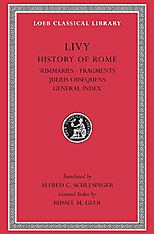
Rome, from the beginning.
Livy (Titus Livius), the great Roman historian, was born at or near Patavium (Padua) in 64 or 59 BC; he may have lived mostly in Rome but died at Patavium, in AD 12 or 17.
Livy’s only extant work is part of his history of Rome from the foundation of the city to 9 BC. Of its 142 books, we have just thirty-five, and short summaries of all the rest except two. The whole work was, long after his death, divided into Decades or series of ten. Books 1–10 we have entire; books 11–20 are lost; books 21–45 are entire, except parts of 41 and 43–45. Of the rest only fragments and the summaries remain. In splendid style Livy, a man of wide sympathies and proud of Rome’s past, presented an uncritical but clear and living narrative of Rome’s rise to greatness.
The Loeb Classical Library edition of Livy is in fourteen volumes. The last volume includes a comprehensive index.
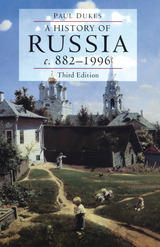
With its breadth of scope and conciseness of presentation, this third edition of A History of Russia will be invaluable to students of European and Russian history, and also to students of Russian language, literature, and social science.
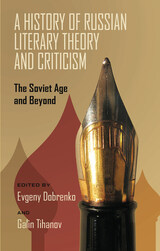
This volume assembles the work of leading international scholars in a comprehensive history of Russian literary theory and criticism from 1917 to the post-Soviet age. By examining the dynamics of literary criticism and theory in three arenas—political, intellectual, and institutional—the authors capture the progression and structure of Russian literary criticism and its changing function and discourse.
The chapters follow early movements such as formalism, the Bakhtin Circle, Proletklut, futurism, the fellow-travelers, and the Russian Association of Proletarian Writers. By the cultural revolution of 1928, literary criticism became a mechanism of Soviet policies, synchronous with official ideology. The chapters follow theory and criticism into the 1930s with examinations of the Union of Soviet Writers, semantic paleontology, and socialist realism under Stalin. A more “humanized” literary criticism appeared during the ravaging years of World War II, only to be supplanted by a return to the party line, Soviet heroism, and anti-Semitism in the late Stalinist period. During Khrushchev’s Thaw, there was a remarkable rise in liberal literature and criticism, that was later refuted in the nationalist movement of the “long” 1970s. The same decade saw, on the other hand, the rise to prominence of semiotics and structuralism. Postmodernism and a strong revival of academic literary studies have shared the stage since the start of the post-Soviet era.
For the first time anywhere, this collection analyzes all of the important theorists and major critical movements during a tumultuous ideological period in Russian history, including developments in émigré literary theory and criticism.
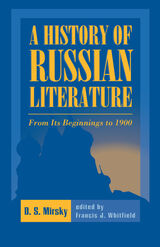

This concise account traces the history of the Scandinavian countries from earliest times to the present, emphasizing common features in their heritage and in their contribution to the modern world. The author’s aim is to describe each country’s history, traditions, and way of life and to examine the political development of the five nations in the context of the whole Nordic region.

Modern scientific research has changed significantly since the days of Isaac Newton, with professionalized, collaborative, and international networks that engage a more diverse community of researchers. Yet, the long history of scientific publishing reveals a deep mutual relationship between how academic discourse develops and what (and how) research is published. With unique insights from the Royal Society of London’s comprehensive archives spanning 350 years of scientific journal publishing, A History of Scientific Journals illustrates the entangled histories of scientific publishing and professional discourses. This volume provides insights into the editorial management, business practices, and financial difficulties of journals such as Philosophical Transactions, which was first published in 1665 and has published papers by Newton, Darwin, Dorothy Hodgkin, and Stephen Hawking. Highly illustrated with photographs of historic archived documents, including early publications and editorial annotations, this history extends to the present day and includes a look at digital journal publication and the open-access movement, making the book's publication through UCL Press both appropriate and symbiotic.
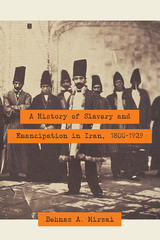
Shortlisted for the 2018 Wallace K. Ferguson Prize, Canadian Historical Association
The leading authority on slavery and the African diaspora in modern Iran presents the first history of slavery in this key Middle Eastern country and shows how slavery helped to shape the nation’s unique character.
Slavery in the Middle East is a growing field of study, but the history of slavery in a key country, Iran, has never before been written. This history extends to Africa in the west and India in the east, to Russia and Turkmenistan in the north, and to the Arab states in the south. As the slave trade between Iran and these regions shifted over time, it transformed the nation and helped forge its unique culture and identity. Thus, a history of Iranian slavery is crucial to understanding the character of the modern nation.
Drawing on extensive archival research in Iran, Tanzania, England, and France, as well as fieldwork and interviews in Iran, Behnaz A. Mirzai offers the first history of slavery in modern Iran from the early nineteenth century to emancipation in the mid-twentieth century. She investigates how foreign military incursion, frontier insecurity, political instability, and economic crisis altered the patterns of enslavement, as well as the ethnicity of the slaves themselves. Mirzai’s interdisciplinary analysis illuminates the complex issues surrounding the history of the slave trade and the process of emancipation in Iran, while also giving voice to social groups that have never been studied—enslaved Africans and Iranians. Her research builds a clear case that the trade in slaves was inexorably linked to the authority of the state. During periods of greater decentralization, slave trading increased, while periods of greater governmental autonomy saw more freedom and peace.
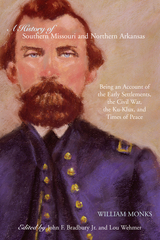
Originally published in 1907 and now reprinted for the first time, this is the only account published by a Union guerrilla in the border region of the central Ozarks, where political and civil violence lasted from the Civil War well into the 1880s.
There were probably many people who wanted to shoot Billy Monks. He was a Union patriot and skilled guerrilla fighter to some, but others called him a bushwhacker, a murderer, and a thief. His was a very personal combat: he commanded, rallied, arrested, killed, quarreled with, and sued people he knew. His life provides a striking example of the cliché that the war did not end in 1865, but continued fiercely on several fronts for another decade as partisan factions settled old scores and battled for local political control.
This memoir was Monks’s last salvo at his old foes, by turns self-defense and an uncompromising affirmation of the Radical Union cause in the Ozarks. The editors include a new biographical sketch of the author, fill in gaps in his narrative, identify all the people and places to which he refers, and offer a detailed index. Monks himself illustrated the volume with staged photographs of key events re-created by aged comrades who appear to have been just barely able to hoist the muskets they hold as props.


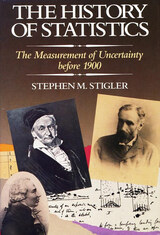
This magnificent book is the first comprehensive history of statistics from its beginnings around 1700 to its emergence as a distinct and mature discipline around 1900. Stephen M. Stigler shows how statistics arose from the interplay of mathematical concepts and the needs of several applied sciences including astronomy, geodesy, experimental psychology, genetics, and sociology. He addresses many intriguing questions: How did scientists learn to combine measurements made under different conditions? And how were they led to use probability theory to measure the accuracy of the result? Why were statistical methods used successfully in astronomy long before they began to play a significant role in the social sciences? How could the introduction of least squares predate the discovery of regression by more than eighty years? On what grounds can the major works of men such as Bernoulli, De Moivre, Bayes, Quetelet, and Lexis be considered partial failures, while those of Laplace, Galton, Edgeworth, Pearson, and Yule are counted as successes? How did Galton’s probability machine (the quincunx) provide him with the key to the major advance of the last half of the nineteenth century?
Stigler’s emphasis is upon how, when, and where the methods of probability theory were developed for measuring uncertainty in experimental and observational science, for reducing uncertainty, and as a conceptual framework for quantitative studies in the social sciences. He describes with care the scientific context in which the different methods evolved and identifies the problems (conceptual or mathematical) that retarded the growth of mathematical statistics and the conceptual developments that permitted major breakthroughs.
Statisticians, historians of science, and social and behavioral scientists will gain from this book a deeper understanding of the use of statistical methods and a better grasp of the promise and limitations of such techniques. The product of ten years of research, The History of Statistics will appeal to all who are interested in the humanistic study of science.
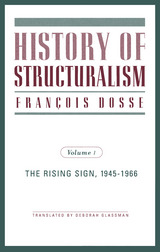


The authors recount the development of the academic program, the recruitment of students, and the support from Temple that enabled curricular and pedagogical improvement.
They also address the university’s relationships with three Japanese partners, and the financial threats and crises TUJ faced over the decades.
The History of Temple University Japan is not only an important documentation of TUJ, but also a history of U.S.-Japanese relations. What emerges is the significant impact TUJ has had on the thousands of students, faculty, and staff who have been a part of this international academic institution.

The harmonies of the Fisk Jubilee Singers, the measured brush strokes of painter Lloyd Branson, the intricate basket weaving of Maggie Murphy, the influence of the Agrarian literary movement, and the theater barnstorming of actor-manager Sol Smith—such are the sounds, images, and expressions of Tennessee’s arts legacy.
Through its interlocking themes of tradition and innovation, A History of Tennessee Arts: Creating Traditions, Expanding Horizons traces the story of the arts in Tennessee from its formal, more academic side to its vernacular expressions of culture, self, and community. Both the formal and the vernacular contribute to an understanding of what the arts mean to Tennesseans and, in turn, what Tennesseans have to offer the culture of the state, the region, and the nation. A history of the arts in the Volunteer State becomes, then, an evolving barometer of not only where we have been as a culture, but also how we have matured as a society.
This richly illustrated book, cosponsored by the Tennessee Arts Commission and the Tennessee Historical Society, covers the varieties of art in Tennessee in five parts. The visual arts and architecture section includes chapters on vernacular and high style architecture, sculpture, painting and photography, while the section on craft arts celebrates folk arts such as woodcraft, silversmithing, pottery, and textiles. The section on Tennessee’s rich literary history includes such writers as James Agee, Robert Penn Warren, and Evelyn Scott, while the performing arts are represented by a wealth of storytellers along with two centuries of stage history. Finally, Tennessee is home to—and originator of—much of the music that we know as distinctively American. Contributors to the music section examine gospel, blues, rock, soul, and, of course, country music.
From prehistoric cave paintings to the “cow punk” of Jason and the Scorchers, from the elegant capitol building of William Strickland to Ballet Memphis, and from the unique cantilevered barns of East Tennessee to the chronicles of Alex Haley, the arts in Tennessee truly celebrate traditions and strive to expand our horizons.
The Editor: Carroll Van West is director of the Center for Historic Preservation at Middle Tennessee State University and senior editor of the Tennessee Historical Quarterly.

Mayan civilization, renowned for its mathematics, writing, architecture, religion, calendrics, and agriculture, fascinates scholars and a wide lay public as archaeology and glyphic decipherment reveal more of its secrets. In this pathfinding study of the Mayan language family, John S. Robertson explores major changes that have occurred in the core of Mayan grammar from the earliest, reconstructed ancestral language down through the colonial languages to the modern languages that are spoken today.
Building on groundwork already laid in phonological studies and in the study of the pronominal system, Robertson's examination of tense/ aspect/ mood/voice is the next logical step in the general linguistic study of Mayan. Robertson offers careful consideration of all the major subgroups of Mayan, from Yucatecan to Quichean, as they are spoken today. He also draws extensively on colonial documents assembled by bilingual Spanish-Mayan speaking clerics. These documents provide a check on the accuracy of both the reconstructed ancient language, Common Mayan, and the theoretical evolution of the modern languages from this ancestor. The study will also be of value to students of the Maya glyphs, since it discusses the grammatical system that most probably underlies the glyphic representations.
Beyond its obvious interest for Mayan linguistics, the study proposes a theory of language change that will be important for all students of comparative linguistics. Robertson's work sets forth the basic, universal assumptions that provide for an appropriate description of the grammatical systems of all languages. It will be a significant reference for future researchers.


A History of the Alans in the West was first published in 1973. Minnesota Archive Editions uses digital technology to make long-unavailable books once again accessible, and are published unaltered from the original University of Minnesota Press editions.
The Alans, a nomadic people from the steppe lands of south Russia, were among the many invaders of the Roman empire who helped to bring about its fall. Unlike the majority of the invaders, they were not Germans — they were Indo-Iranians—and they were not, like most barbarians, organized in agricultural communities. This history traces their westward movement from the time of their first mention in sources of classical antiquity through the early Middle Ages.
Professor Bachrach discusses the social and religious institutions of the Alans and especially their military customs. As he shows, they contributed much to the military repertoire of the West, especially the feigned retreat tactic and the role of the cavalry as the primary part of the army. In their westward movement the Alans were assimilated by people in Gaul and Italy and served the empire in a military capacity during the fourth and fifth centuries. IN addition to their military and political impact in several areas, the Alans also influenced early medieval artistic styles, literary developments, place names, and personal names.
A number of illustrations provide examples of the artistic influence of the Alans, and there are maps pertinent to the history.

In the 1700s, Jean-Jacques Rousseau celebrated the Alps as the quintessence of the triumph of nature over the “horrors” of civilization. Now available in English, History of the Alps, 1500-1900: Environment, Development, and Society provides a precise history of one of the greatest mountain range systems in the world. Jon Mathieu’s work disproves a number of commonly held notions about the Alps, positioning them as neither an inversion of lowland society nor a world apart with respect to Europe. Mathieu’s broad historical portrait addresses both the economic and sociopolitical—exploring the relationship between population levels, development, and the Alpine environment, as well as the complex links between agrarian structure, society, and the development of modern civilization. More detailed analysis examines the relationship between various agrarian structures and shifting political configurations, several aspects of family history between the late Middle Ages and the turn of the twentieth century, and exploration of the Savoy, Grisons, and Carinthia regions.
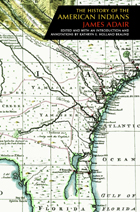
A fully annotated edition of a classic work detailing the cultures of five southeastern American Indian tribes during the Contact Period
James Adair was an Englishman who lived and traded among the southeastern Indians for more than 30 years, from 1735 to 1768. During that time he covered the territory from the Appalachian Mountains to the Mississippi River. He encountered and lived among Indians, advised governors, spent time with settlers, and worked tirelessly for the expansion of British interests against the French and the Spanish. Adair’s acceptance by the Creeks, Choctaws, Cherokees, and Chickasaws provided him the opportunity to record, compare, and analyze their cultures and traditions.Adair’s written work, first published in England in 1775, is considered one of the finest histories of the Native Americans. His observations provide one of the earliest and what many modern scholars regard as the best account of southeastern Indian cultures. This edition adheres to current standards of literary editing, following the original closely, and provides fully annotated and indexed critical apparatus.
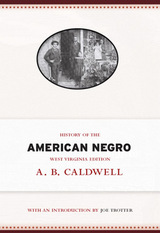

History of the American Newspaper Publishers Association was first published in 1950. Minnesota Archive Editions uses digital technology to make long-unavailable books once again accessible, and are published unaltered from the original University of Minnesota Press editions.
The dramatic story of the association that for sixty-three years has held a position of major importance in the development of our free press. For the first time the full story of the activities of this influential daily newspaper trade association is told by a scholar who was given access to the association's files of publications.
The story of the ANPA is primarily one of the advancement of the business interests of daily newspapers and of resulting conflicts and adjustments with labor unions, communications competitors, advertisers, newsprint makers, and the government. The author analyzes these areas of activity and integrates the history of the ANPA with the economic, political, and social developments that have transformed America and its daily newspapers since 1887.
Of major interest and importance is the discussion of the labor relations policy of the daily newspapers who are ANPA members.
Other major topics include the association's opposition to federal legislation which the ANPA asserted imperiled the freedom of the press; the association's battles to eliminate tariff charges on newsprint and to maintain favorable postal rates; competition with radio, magazines, and other communications media; business problems of daily newspapers in the field of advertising; and mechanical developments which have revolutionized the printing industry.
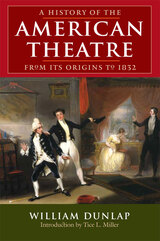
As America passed from a mere venue for English plays into a country with its own nationally regarded playwrights, William Dunlap lived the life of a pioneer on the frontier of the fledgling American theatre, full of adventures, mishaps, and close calls. He adapted and translated plays for the American audience and wrote plays of his own as well, learning how theatres and theatre companies operated from the inside out.
Dunlap's masterpiece, A History of American Theatre was the first of its kind, drawing on the author's own experiences. In it, he describes the development of theatre in New York, Philadelphia, and South Carolina as well as Congress's first attempts at theatrical censorship. Never before previously indexed, this edition also includes a new introduction by Tice L. Miller.


“Here at last is a genuinely readable, genuinely responsive history of the Arabs.”—Edward W. Said, Los Angeles Times Book Review
Upon its publication in 1991, Albert Hourani’s masterwork was hailed as the definitive story of Arab civilization, and became both a bestseller and an instant classic. In a panoramic view encompassing twelve centuries of Arab history and culture, Hourani brilliantly illuminated the people and events that have fundamentally shaped the Arab world.
Now this seminal book is available in an expanded second edition. Noted Islamic scholar Malise Ruthven brings the story up to date from the mid-1980s, including such events as the Gulf War; civil unrest in Algeria; the change of leadership in Syria, Morocco, and Jordan; and the aftermath of the events of September 11, 2001. The terrorist attacks in the United States, ongoing crisis in Iraq, and renewed violence between Israelis and Palestinians all underscore the need for a balanced and well-informed understanding of the Arab world, and make this insightful history of the Arab peoples more important than ever.


Moses Khorenats'i's History of the Armenians is the classic account of the origins and early history of the Armenian people. No work has been more influential in shaping the Armenians' view of their national past. Writing long after the events he describes, Moses recorded the legends and traditions of Armenia's heroes; putting them into a coherent order, he then integrated the history of Armenia into world history as known from Greek sources. Robert Thomson now translates the History into English for the first time and provides information the reader needs to interpret Moses' account.
This unique English text is translated from the nearly unobtainable critical edition published in Tiflis in 1913. Mr. Thomson's commentary establishes Moses' Greek, Armenian, and Syriac sources, showing how he used them, and points to bias and uncorroborated statements. His notes identify people and places, explain allusions, and give references to published scholarship on specific questions. In the introduction he discusses Moses' methods and purposes, and establishes the date of composition—a matter that has been hotly debated.
This volume will be welcome by everyone interested in Armenian literature, history, and traditions as well as by students of Near Eastern history and Christian literature.
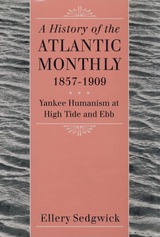
Although the Atlantic was rooted in the Yankee humanism of Boston, Cambridge, and Concord, its scope was national. Sedgwick points out that while the magazine spoke for high culture, its tradition was one of intellectual tolerance and of moderate liberalism on social and political issues. It supported abolition, women's rights, and religious tolerance, and published incisive criticism of unregulated industrial capitalism. The Atlantic also played an important role in the rise of American literary realism, and published early work not only by such authors as James, Jewett, and Howells, but also by Chesnutt, Du Bois, Cahan, and Zitkala-Sa.
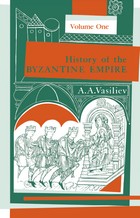
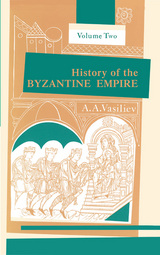
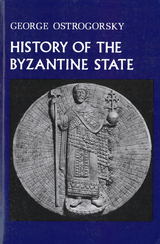
With clarity and logic, George Ostrogorsky succinctly traces the intricate thousand-year course of the Byzantine Empire. While his emphasis is on political development, he gives extensive consideration to social, esthetic, economic, and ecclesiastical factors as well. He also illuminates the Empire’s links with classical antiquity, as well as its effect on contemporaneous and subsequent European and Near Eastern history. The author captures the full sweep, the grandeur, and the tragic course of Byzantium’s rise and fall, backed by the scholarship and authority of a lifetime devoted to its study.
Long recognized as the basic history of the Byzantine Empire, this masterful work incorporates the results of the vast expansion in Byzantine research in recent years. This edition has been completely retranslated by Professor Joan Hussey from the third German edition. The text and annotation have been expanded by over seventy pages, with more than double the number of illustrations, and additional reference tables and lists.
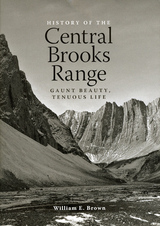

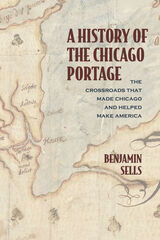
This fascinating account explores the significance of the Chicago Portage, one of the most important—and neglected—sites in early US history. A seven-mile-long strip of marsh connecting the Chicago and Des Plaines Rivers, the portage was inhabited by the earliest indigenous people in the Midwest and served as a major trade route for Native American tribes. A link between the Mississippi River and the Atlantic Ocean, the Chicago Portage was a geopolitically significant resource that the French, British, and US governments jockeyed to control. Later, it became a template for some of the most significant waterways created in the nineteenth and twentieth centuries. The portage gave Chicago its name and spurred the city’s success—and is the reason why the metropolis is located in Illinois, not Wisconsin.
A History of the Chicago Portage: The Crossroads That Made Chicago and Helped Make America is the definitive story of a national landmark.

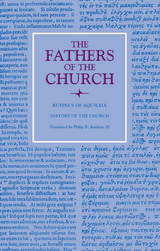
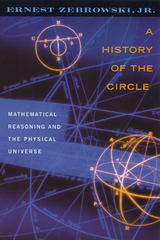
The concept of the circle is ubiquitous. It can be described mathematically, represented physically, and employed technologically. The circle is an elegant, abstract form that has been transformed by humans into tangible, practical forms to make our lives easier.
And yet no one has ever discovered a true mathematical circle. Rainbows are fuzzy; car tires are flat on the bottom, and even the most precise roller bearings have measurable irregularities. Ernest Zebrowski, Jr., discusses why investigations of the circle have contributed enormously to our current knowledge of the physical universe. Beginning with the ancient mathematicians and culminating in twentieth-century theories of space and time, the mathematics of the circle has pointed many investigators in fruitful directions in their quests to unravel nature’s secrets. Johannes Kepler, for example, triggered a scientific revolution in 1609 when he challenged the conception of the earth’s circular motion around the sun. Arab and European builders instigated the golden age of mosque and cathedral building when they questioned the Roman structural arches that were limited to geometrical semicircles.
Throughout his book, Zebrowski emphasizes the concepts underlying these mathematicians’ calculations, and how these concepts are linked to real-life examples. Substantiated by easy-to-follow mathematical reasoning and clear illustrations, this accessible book presents a novel and interesting discussion of the circle in technology, culture, history, and science.
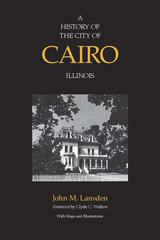
Long out of print and much sought after bycollectors, Lansden’s classic 1910 history of Cairo remains valuable for the early history of the city. Its reprinting here, with a new Foreword by Clyde C. Walton, former Illinois State Historian, thus makes available again one of the finest examples of local history ever written, stressing as itdoes Cairo’s important relations with its area and with the country—in Lansden’s words, “this part of the Valley of the Mississippi—this Illinois Country.”
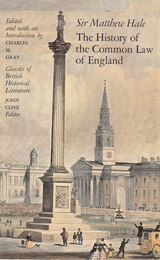
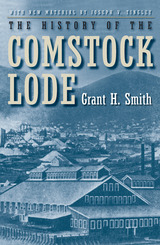
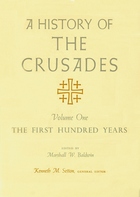
READERS
Browse our collection.
PUBLISHERS
See BiblioVault's publisher services.
STUDENT SERVICES
Files for college accessibility offices.
UChicago Accessibility Resources
home | accessibility | search | about | contact us
BiblioVault ® 2001 - 2024
The University of Chicago Press









